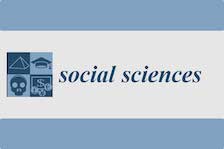YouTube is the most popular social media platform for children and adolescents, yet relatively little research has been conducted on adolescents’ use and their motivations for use. Prior research has predominantly focused on measuring the quantity of time spent on the platform, and less is known about the motivations and self-awareness of using YouTube as children turn into tweens and teens.
Stemming from a larger survey study of adolescent social technology use, the researchers interviewed a subset of 35 youths (50% female, 49% male, 1% non-binary) to qualitatively explore the benefits and challenges of YouTube use. Thematic analyses revealed the wide range of emotional responses and regulation that were attributed to YouTube use, including humor, fear, anger, insecurity, and anxiety. Some participants experienced wishful identification with YouTube influencers, and others viewed YouTube as entertainment or an escape from boredom.
Sleep regulation was mixed, in that for some, YouTube was a distraction from getting enough sleep, and for others, it helped them fall asleep. Parental monitoring was a developmental challenge as the youths described their parents as lacking knowledge about the length of time they spend on the platform and/or the risky YouTube content that they watch, particularly as they got older.
These exploratory findings may be pertinent for parents, educators, and clinicians.
This review looks at current trends in the effect of social media use on mental health, identity development, and civic engagement for LGBTQ + youth during the post-pandemic period, when online engagement has significantly increased. It explores both risks and benefits associated with this shift and offers recommendations for clinicians and future research in this evolving landscape.
There is an intricate relationship between the harms and benefits of social media use and developing adolescents. While some research suggests that social media use and overuse is associated with negative outcomes such as depression and anxiety, many recent studies have found that, for LGBTQ+ youth in particular, social media may be a necessary safe space they have for representation and community building, especially when absent in their physical world. It is important to look at the nuances behind social media use motivations and adolescents’ intersectional identities when understanding and developing personalized interventions for mental health.
This review looks at how LGBTQ+ youth have used social media since the beginning of the COVID-19 pandemic to increase their own agency and build community through developing their own safe spaces online. LGBTQ+ youth’s hidden and intersectional identities might isolate them within their home and community environments, which must be considered when thinking about controlling adolescent social media use. Ongoing research should look into the relationship between social media use and LGBTQ+ adolescent mental health at a more granular level, rather than just LGBTQ+ vs. heterosexual peers, to further tailored interventions.
Much of the current media messaging consists of alarmist headlines that perpetuate a protectionist mentality on the dangers lurking on social media. There is a tendency to “pass the buck” on who is responsible for “saving” our youth from their digital worlds: social media platforms go unchecked from government oversight, parents expect the social media companies to prevent harm, educators want parents to guide their youth, etc.
How about learning from youth as “under-appreciated experts” who can be tapped to improve youth wellbeing? The motivation of the researchers is to elevate youth’s experiences (a.k.a. “youth centeredness”) in future endeavors that involve their digital ecosystems. In this chapter, they illustrate a research-and-action case study framed in positive youth development terms, offering a concrete documentation of how to engage youth in equitable and meaningful ways in the co-design of their own digital wellbeing.
In the U.S., licensed child care is funded through a mostly private market, constraining the supply of accessible high-quality care. Combine this with variable parental needs and preferences and it is easy to see how alignment is not always achievable. Lower-income families in particular face constraints in securing care that is strong on multiple care dimensions of affordability, quality, and availability when, where, and for whom they need it.
Some parents confront forced choices or tradeoffs among aspects of care. This study aimed to understand the tradeoffs parents make in selecting the best care arrangements for their family.
Between October 2019 and January 2020, the researchers interviewed 67 mothers in Massachusetts whose child(ren) had not yet started kindergarten. They worked to understand the ways in which tradeoffs occurred and the implications of those tradeoffs by asking about mothers’ initial preferences and needs when first considering child care options relative to the choices they made.
They found that 1) tradeoffs occurred along the multiple dimensions of care, 2) mothers used strategies to mitigate the consequences of tradeoffs, 3) tradeoffs varied in level of severity, 4) the more accessible the care, the less severe the tradeoff, and 5) tradeoffs varied in meaningful ways. These findings underscore the utility in applying a tradeoffs lens to assessing child care policy and practice in furtherance of equitable solutions.
This article argues that in understanding self-esteem and self-image in adolescence, it is imperative to keep in mind normative adolescent identity development and how adolescents present themselves to society in the online world as well as their online interactions on social media.
Adolescents may use social media accounts to emotionally regulate self-esteem and self-image which may be related to their levels of anxiety, depression, and loneliness, with studies showing that social media can either positively or negatively affect self-esteem.
As a normative part of adolescent social comparison seeking, adolescents may build their self-esteem and self-image through social feedback, accepting or rejecting interactions with online peers. As society is more focused on female physical appearance, appearance-contingent self-worth is found more frequently in females.
Selfies, a social media form of self-portraiture, have become a powerful means for self-expression in adolescents, identifying with idealized figures toward their own separation-individuation from primary parental figures.
Rather than making sweeping generalizations about negative outcomes related to youth social media use, in clinical practice it is important to consider intersectional identity factors of a particular youth when assessing impacts of social media on self-esteem.
Women earn less than men, and that is especially true of mothers relative to fathers. Much of the widening occurs after family formation when mothers reduce their hours of work. But what happens when the kids grow up?
To answer that question, the researchers estimated three earning gaps: the “motherhood penalty,” the “price of being female,” and the “fatherhood premium.” When added together, these three produce the “parental gender gap,” defined as the difference in earnings between mothers and fathers.
They estimated (log) earnings gaps for college graduates born around 1960 using longitudinal data from the NLSY79 and from the LEHD-Census that track respondents from their twenties to their fifties.
As the children grow up and as women work more hours, the motherhood penalty is greatly reduced. But women, especially mothers, seem willing throughout their working lives to trade lower pay for various amenities, such as working in firms with management practices that are less penalizing of career interruptions or of shorter work schedules. Fathers, however, manage to expand their relative earnings gains as their children age, particularly among those working in time-intensive jobs, irrespective of work hours or firm fixed effects. The parental gender gap in earnings remains substantial over the family lifecycle.
Using a randomized controlled trial, the researchers investigated changes in both sexual harassment (SH) perpetration and victimization of 2104 middle school students in New York City who received divergent saturation and dosage levels of Shifting Boundaries, an SH prevention program, which was represented by the length of the program. They assessed the saturation effect of the program by comparing the outcomes across respondents from 26 schools in which there were varying percentages of students enrolled in the program.
The data suggested that, overall, the program was effective in reducing sexual harassment victimization but achieved a null effect against respondents' SH perpetration and that neither the length nor the school-saturation level of the program exerted a significant effect on SH perpetration. Although the data indicated a significant difference in SH victimization between the treatment and control group, when comparing subgroups who received treatment with divergent saturation and dosage levels, no statistically significant difference was identified.
These results suggested that the program effect was not contingent on the portion of students in a school who enrolled in the program, nor was it contingent on the dosage.
The purpose of this study was to identify whether different aspects of social media use were associated with substance use among middle- and high school-aged youth. Participants were recruited from four northeast U.S. middle schools and invited to complete an online survey in fall 2019 and fall 2020.
The researchers found that seeing a social media post about drugs/alcohol in the past 12 months was significantly associated with higher odds of ever using alcohol, cannabis, e-cigarettes, and multiple substances. The total number of social media sites ever used was significantly associated with higher odds of ever using cannabis, cigarettes, e-cigarettes, and multiple substances. Checking social media every hour or more was significantly associated with higher odds of ever using alcohol. A higher problematic internet use score was significantly associated with higher odds of ever using cannabis, e-cigarettes, and multiple substances.
These findings support the need for substance use prevention and social media literacy education and screening to begin early, ideally in elementary school, before youth are using social media and substances.
This study was supported by the Eunice Kennedy Shriver National Institute for Child Health and Human Development under award number R15HD094281-01. The content is solely the responsibility of the authors and does not necessarily represent the official views of the National Institutes of Health.
In this study, the researchers examined online and offline social supports for sexual minority adolescents, underscoring the understudied developmental period of early adolescence and the mental outcome of loneliness.
LGBTQ+ youth reported significantly higher levels of loneliness compared to their heterosexual counterparts. To understand potential sources of social support while youth explore their sexual identities, the researchers compared the experiences of LGBTQ+ youth at both ends of the loneliness spectrum. Gaining knowledge about their sexual orientation from LGBTQ+ organization websites, participating in gender-sexuality alliances, and using TikTok or Instagram were associated with lower levels of loneliness. Providing social support to online friends was associated with lower loneliness; however, receiving online support was not associated with lower loneliness. Furthermore, proactive social media engagement such as posting uplifting content, joining online communities, or raising awareness about social issues were associated with lower levels of loneliness.
These results provide guidance on specific youth behaviors and online communities beyond a focus on screen time, while highlighting the continued need for social support to ameliorate loneliness, such as gender-sexuality alliance networks.
This study was supported by the Eunice Kennedy Shriver National Institute for Child Health and Human Development under award number R15HD094281-01. The content is solely the responsibility of the authors and does not necessarily represent the official views of the National Institutes of Health.
In this study, the researchers surveyed 248 U.S. parents of early adolescents about their media monitoring behaviors, the family context, and perceptions of their children’s problematic internet use. The results revealed that restrictive parental monitoring (including rules and limits of time or content) of adolescents’ digital media use was associated with children’s problematic internet use. However, active monitoring (efforts to promote critical thinking of the media by discussing central themes, character choices, and implicit messages of content) and deference monitoring (intentional avoidance of restrictions, often in an attempt to showcase parental trust in children’s decision-making) were not associated with early adolescent problematic internet use and were associated with family contexts.
Qualitative interviews with a subset of 31 parents revealed that while most parents reported restrictive behaviors, multiple techniques (e.g., active, surveillant, and deference) were also leveraged when navigating children’s online behaviors. Parents tended to converge on the same types and reasons for restrictive monitoring, whereas for other approaches the reasons behind their decision-making were quite different.
The implication of this study is that parental media monitoring behaviors during early adolescence are rapidly evolving and not confined to a single strategy. Understanding the family dynamics and parental involvement in adolescents’ digital media use remains critical in preventing children’s problematic behaviors and promoting positive online behaviors.
Research reported in this publication was supported by the Eunice Kennedy Shriver National Institute of Child Health and Human Development of the National Institutes of Health under award number 1R15HD094281-01 and Children and Screens: Institute of Digital Media and Child Development. The content is solely the responsibility of the authors and does not necessarily represent the official views of the National Institutes of Health.
This study examines the stability and longitudinal predictors of children's self-blame appraisals among a sample of children reported for family violence.
Children aged 7 to 17 years old were recruited as part of a longitudinal assessment of families referred to the U.S. Navy's Family Advocacy Program due to allegations of child physical abuse, sexual abuse, or intimate partner violence. The children completed assessments of self-blame at three time points, and baseline measures of their victimization experience, caregiver-child conflict, and depression.
Victimization that involved injury, the number of perpetrators, the number of victimization types, caregiver-child conflict, and depression were each positively associated with baseline self-blame. The results indicated only caregiver-child conflict and baseline depression predicted increases in self-blame.
These findings suggest clinicians and researchers may consider assessment of victimization characteristics, caregiver-child relationships, and depression symptoms to identify children most at risk for developing self-blame appraisals.
This study used longitudinal data from 940 pet-owning adolescents, collected over four time points from youth in the northeastern United States. The researchers assessed whether pet relationship quality predicted trajectories of loneliness, social anxiety, and depression.
The results indicated that high satisfaction with a pet relationship was associated with more favorable trajectories, but companionship (i.e., regarding the frequency of interacting with the pet) was not related significantly to socio-emotional functioning. High levels of disclosure to a pet were linked with less favorable trajectories for loneliness and depression, but not related to social anxiety.
These results suggest that a pet relationship can, in some cases, be associated positively with socio-emotional development, but that there is significant complexity in these associations. Families, educators, and practitioners should take a nuanced approach to understanding individual adolescent-pet relationships as an asset for specific youth.
Research reported in this publication was supported by the Eunice Kennedy Shriver National Institute of Child Health and Human Development under award numbers R03HD101060 and R15HD094281. The content is solely the responsibility of the authors and does not necessarily represent the official views of the National Institutes of Health.
Social technologies such as social media have impacts, both positive and negative, on racial-ethnic (RE) minority adolescents. However, the role of RE identity in social media use and wellbeing has been understudied.
This study addresses the social media experiences and mental health (i.e., depressive and online anxiety symptoms) of a diverse group of 668 adolescents aged 10-17, 45.7% of whom are non-white. The researchers investigated the roles of self-identified RE groups, identity importance, exposure to hate messaging, and gender.
The researchers found significant moderating effects of RE importance, gender, and online hate messaging. Additionally, the moderating role of race-ethnicity reveals a stronger association between greater social media frequency and heightened depressive symptoms among Asian adolescents. Black adolescents showed a significant association between greater social media frequency and decreased online social anxiety. Significant effects of online hate messaging exposure also reveal associations between online behaviors and depression and online social anxiety across adolescents.
This study suggests that association with RE groups and identity importance may have a significant role in social media experiences and mental health outcomes for diverse groups of adolescents. Additionally, the findings highlight both opportunities and hindrances that social media spaces afford racially and ethnically diverse groups during a critical period in psychosocial and identity development.
Research reported in this publication was supported by the Eunice Kennedy Shriver National Institute of Child Health and Human Development under award number R15HD094281. The content is solely the responsibility of the authors and does not necessarily represent the official views of the National Institutes of Health.
This chapter in the book Flourishing in Contexts and Cultures: Sociocultural Perspectives on Fostering Youth Well-Being falls under Section II: Contexts and Circumstances Affecting Youth Well-Being and Flourishing.
In this chapter, the authors shift away from a strictly negative narrative of the relationship between digital technologies and youth wellbeing to explore possible mechanisms for positive outcomes. They discuss how the digital age has not only added another social ecosystem to an already dynamic time of development in adolescence, but has expanded opportunities for growth around identity, resilience, and overall positive youth development. Though online spaces come with risks, especially in an increasingly diverse society, they also come with opportunities to overcome and leverage social capital, self-determination, and increasing control over emotional regulation. Online spaces can be a place of refuge for adolescents, and, ultimately, a source of positive wellbeing.
The book, which embodies the ‘who’, ‘what’, ‘when’, ‘where’, and ‘how’ of youth wellbeing, will be extremely insightful and useful for scholars and researchers as well as policymakers and practitioners (teachers, interventionists, counselors, youth mentors) who seek to promote the wellbeing of young people.
This book chapter focuses on sexual assaults that involve completed or attempted physical contacts against an adult, focusing primarily on female victims. National studies of victimization are relied upon to examine the incidence and prevalence of rape in the United States, and the authors also take an in-depth look at rape in the military, prison, and in the intersections of gender and race. Definition issues, rape myths, the causes of rape, and society’s response to rape and rapists are discussed.
The Bahá’í Faith and African American Studies: Perspectives on Racial Justice provides readers who may already have basic or even advanced familiarity with the struggle for racial justice in the United States with new material from a less well-known angle: that of members of the Baha’i Faith, for whom the pursuit of racial justice, healing, and harmony is central to their religious expression. In this book, readers will find history, social scientific analysis, and personal memoir showcasing Black Baha’is as well as Baha’is from diverse backgrounds who are working to address America’s “most challenging issue.”
For families with children during the COVID-19 pandemic, it is crucial to explore how both youth and parents view their roles with regard to the shared caretaking of pets. We present findings from a U.S. based study of adolescents and parents regarding pet care responsibility. As part of a broader longitudinal study, we analyzed survey data from 567 pet-owning adolescents and a subset of 356 dog owning adolescents aged 10–17. We also conducted 31 in-depth interviews with parents of adolescents from the same study. Adolescents who reported more pet caretaking responsibilities were more likely to spend time with pets to cope with stress and to have improved family relationships during the COVID-19 pandemic. For dog owners only, increased levels of responsibility for the pet was significantly associated with a higher likelihood of identifying as a pet owner. Qualitative findings showcase the range of parental expectations and adolescent initiative around pet caretaking. Our study highlights the continued importance of pet companionship during the adolescent years as they develop their identities as responsible pet owners.
Research reported in this publication was supported by the Eunice Kennedy Shriver National Institute of Child Health and Human Development of the National Institutes of Health under award numbers 5R03HD101060-02 and 1R15HD094281-01. The content is solely the responsibility of the authors and does not necessarily represent the official views of the National Institutes of Health.
In this article, Stein and Taylor chronicle the history of the movement to address sexual harassment in K-12 schools, from their unique perspective on the front lines.
The social movement to address sexual harassment in K-12 schools in the United States traces its development to the larger women’s rights movement in the late 1970s. It was an outgrowth of the work of feminist activists who protested and filed lawsuits to draw attention to sexual harassment in the workplace, as an issue of equity for working women. The focus on sexual harassment in K-12 schools did not begin as an academic pursuit or with an emphasis on research, but as an activist movement to rectify injustices.
Stein and Taylor document the unwritten history of this social movement by examining the early roots of the work to address and prevent sexual harassment in K-12 schools. They focus specifically on those who worked in the education field, whether at the state level in the state education bureaucracy or at the local level in school districts across the U.S.
The article looks not only backward but forward, emphasizing the need for current and future researchers to be reflective about their work, to maintain its feminist and gendered perspective, and to ensure research is translated into accessible language so that it is not limited to academic circles.
This study aims to introduce the concept of communities of social media practice, where more experienced users provide guidance to female novice users, “onboarding” newcomers.
Through surveys with 968 early adolescents (average age was 13), the authors quantitatively explored sources and types of guidance for young social media users, popularity of conversation themes related to this guidance, and how these conversations are associated with positive social media engagement. The authors qualitatively documented a case study of how a summer workshop of 17 students promotes positive social media use through a community of practice.
Although early adolescent girls reported that they more frequently talked to their parents about a wider range of social media topics, same-age peers and younger family members (e.g., siblings, cousins) were also frequent sources. Surprisingly, the authors also found that the source most strongly associated with positive social media use was the peer group. This case study of an intentional community of practice demonstrated how peers go from “peripheral” to “centered” in socializing each other for more positive social media use.
Unlike most prior scholarship on mediating social technology use, this study focuses on a critical developmental period (e.g., early adolescents), sources of guidance other than exclusively parents, explores the specific conversation topics that offer guidance, and documents an informal community of practice for girls that provides the training ground for peers and adult facilitators to codesign more positive social media spaces.
Research reported in this publication was supported by the Eunice Kennedy Shriver National Institute of Child Health and Human Development of the National Institutes of Health under award number 1R15HD094281-01. The content is solely the responsibility of the authors and does not necessarily represent the official views of the National Institutes of Health.
Despite the pervasive use of social technology among minority youth, digital media research has been primarily based on white samples of older adolescents and emerging adults. It is critical to understand how overlooked populations—including racial-ethnic, sexual and gender, and other minorities—use digital media for purposes associated with their marginalized backgrounds. As social media adopters are becoming younger, we must explore how the pervasiveness of constant exposure and use affects marginalized identity development in early adolescence.
This book chapter provides an overview of how understudied subgroups of adolescents, namely racial/ethnic minorities, LGBTQ+, economically disadvantaged, and neurodiverse individuals, are influenced by online representations affecting their identity development, and inherent opportunities for risk and resilience. Social media research needs a) to begin at earlier developmental stages to capture critical identity development online and offline, and b) more nuanced research beyond digital access to examine online connections for healthy identity exploration of marginalized adolescents.
Research reported in this publication was supported by the Eunice Kennedy Shriver National Institute of Child Health and Human Development of the National Institutes of Health under award number 1R15HD094281-01. The content is solely the responsibility of the authors and does not necessarily represent the official views of the National Institutes of Health.

Positive youth development has been extensively documented in contexts such as the family, school, and afterschool programs. Emerging theory and research indicate that digital contexts such as social media may also be venues through which young people develop skills and attributes associated with the 5 Cs model (competence, confidence, connection, caring, and character) of positive youth development and thriving.
This study strives to understand if and how middle school youth’s in-person and online networks connect, and if they do connect, whether these connections relate to engaging in beliefs and behaviors associated with positive youth development.
The results suggest that in this sample, middle school youth included peers from afterschool programs in their online networks, and those who had friends from afterschool programs and school engaged in social media behaviors related to positive youth development at higher rates than those who were not connected to in-person networks. No association was found between the amount of time spent in afterschool contexts and any of the positive or problematic social media outcomes in this study.
The authors discuss implications for youth development professionals considering the influence of social media on youth, and next steps for research on afterschool activities and social media use.
This research is supported by the Eunice Kennedy Shriver National Institute of Child Health and Human Development of the National Institutes of Health under award number R15HD094281. The content is solely the responsibility of the authors and does not necessarily represent the official views of the National Institutes of Health.
This paper was a collaboration between the National Institute on Out-of-School Time (NIOST) and the Youth, Media & Wellbeing Research Lab at the Wellesley Centers for Women.
Talk with fathers about sex and relationships can support teens’ health, but its impact is limited as few fathers talk with their teens about sexual issues. Needs assessment and fathers’ input on intervention content and structure can guide the development of programs that support fathers’ health-promoting talk with their teen children about sex and relationships.
In this study, the researchers explored fathers’ goals in their talk with teens about sex and relationships and barriers they perceive to these conversations, as well as what they would look for in an intervention program. Interviews were conducted in the U.S. with 43 fathers of high school-aged teens (age 14-18). The interviews explored fathers’ roles in talk with teens, key messages to teens, and approaches and barriers to conversations, in addition to attitudes toward an intervention and feedback on intervention structure, content, and process.
The findings suggest that fathers see talk with teens about sex as part of their roles, but face challenges in accomplishing this goal. Fathers’ feedback highlights their openness to an intervention and can guide the development of a peer-based and interactive program that addresses how to talk with teens about sex in addition to the content of these conversations.
This research was funded by a grant from the Eunice Kennedy Shriver National Institute of Child Health and Human Development: 1R21HD100807-01A1. The content is solely the responsibility of the authors and does not necessarily represent the official views of the National Institutes of Health.
The majority of mental, emotional, and behavioral disorders have an initial onset before age 24, with 20% annual incidence, and with major depressive disorder being the most common one. Health systems may be able to reduce costs by transitioning from the current treatment-focused model for major depressive disorder to a prevention model. However, evidence is needed for (1) the comparative effectiveness of a “scalable intervention” and (2) an implementation model for such a scalable intervention in the primary care setting.
This paper describes a comparative effectiveness trial evaluating the efficacy of two evidence-based cognitive-behavioral prevention programs: Teens Achieving Mastery over Stress (TEAMS), the “gold standard” group therapy model, and Competent Adulthood Transition with Cognitive Behavioral, Humanistic and Interpersonal Training (CATCH-IT), a scalable, self-directed, technology-based model.
Eligible adolescents, age 13–19, are offered one of these two depression prevention programs across five health systems (30 clinics) in urban and suburban Chicago, rural western Illinois, and Louisville, Kentucky. The research team is comprehensively evaluating patients’ outcomes at two, six, 12, and 18-month assessment points. Using a hybrid clinical trial design that simultaneously examines the implementation process, the study is also assessing adolescents', parents', and providers' experiences (e.g., efficacy, time commitment, cultural acceptability) of each intervention approach.
 Adolescents’ relationships with their pets can be very important, since adolescents are at a developmental stage when they’re relying less on their families and more on other relationships in their lives—both human and animal. Yet most research on pet companionship focuses on adults and young children. Moreover, lived experiences around having pets in households with adolescents are underexplored, particularly from parents’ perspectives.
Adolescents’ relationships with their pets can be very important, since adolescents are at a developmental stage when they’re relying less on their families and more on other relationships in their lives—both human and animal. Yet most research on pet companionship focuses on adults and young children. Moreover, lived experiences around having pets in households with adolescents are underexplored, particularly from parents’ perspectives.
The research team interviewed 31 parents/guardians in the Northeast U.S. to explore their perceptions of the benefits and challenges of having pets for their adolescent’s wellbeing as well as how adolescents affected their pet’s wellbeing.
The three main themes for perceived benefits of pets included social (e.g., reducing anxiety), physical (e.g., screen time companionship), and emotional (e.g., regulation of difficult emotions such as anger and loneliness). Challenges to adolescent wellbeing included such social topics as family tension around unevenly shared responsibilities, physical themes such as problematic animal behaviors, and emotional themes related to grieving the passing of pets.
Dr. Charmaraman and her coauthors offer a developmental systems approach to understanding pets within adolescent families, noting future directions for developing family interventions to improve pet-adolescent interactions given the demands of child and pet upbringing during adolescence.
Research reported in this publication was supported by the Eunice Kennedy Shriver National Institute of Child Health and Human Development of the National Institutes of Health under award numbers R03HD101060-02 and R15HD094281-01. The content is solely the responsibility of the authors and does not necessarily represent the official views of the National Institutes of Health.
 The authors of this study led a synchronous virtual workshop centered on social media innovation, collaboration, and computational design for 17 ethnically diverse, geographically dispersed middle school girls (ages 11-14). In this paper, they present the culminating design ideas of novel online social spaces, focused on positive experiences for adolescent girls and produced in small groups, as well as a thematic analysis of the idea generation and collaboration processes.
The authors of this study led a synchronous virtual workshop centered on social media innovation, collaboration, and computational design for 17 ethnically diverse, geographically dispersed middle school girls (ages 11-14). In this paper, they present the culminating design ideas of novel online social spaces, focused on positive experiences for adolescent girls and produced in small groups, as well as a thematic analysis of the idea generation and collaboration processes.
The authors reflect on the strengths of utilizing social media as a domain for computing exploration with diverse adolescent girls, the role of facilitators in a synchronous virtual design workshop, and the technical infrastructure that can enable active participation and use of participatory design principles in educational workshops with this population.
This study was supported by the Eunice Kennedy Shriver National Institute of Child Health and Human Development: R15HD094281-01. The content is solely the responsibility of the authors and does not necessarily represent the official views of the National Institutes of Health.
 The protective effects of talk with parents about sex in delaying sex and reducing young people’s risky sexual behavior may extend from adolescence to emerging adulthood. However, little is known about the content and process of this communication, or how parents and their emerging adult children perceive their conversations about sex and relationships.
The protective effects of talk with parents about sex in delaying sex and reducing young people’s risky sexual behavior may extend from adolescence to emerging adulthood. However, little is known about the content and process of this communication, or how parents and their emerging adult children perceive their conversations about sex and relationships.
This study offers a novel exploration of family talk about sex during emerging adulthood and addresses topics that are not typically assessed as part of communication research, such as consent and positive talk about sexuality. The study uses thematic analysis to investigate perceptions of family talk about sex in a qualitative sample of 16 pairs of parents and their emerging adult children in the U.S., and includes talk about protection, sexual behavior, pregnancy, and parenting; the positive aspects of sex; consent; and sexual orientation.
The study’s findings identified variation across topics in terms of 1) similarities and differences in parents’ and emerging adults’ comfort in talking with each other about sexual topics; and 2) how they perceive this communication across a range of sexual issues. These findings can inform the development of resources to support parents on how to talk with their emerging adult children about sexual issues in a developmentally appropriate way.
This work was supported by the Eunice Kennedy Shriver National Institute of Child Health and Human Development: R03HD095029.
 Family communication about sex protects against risky sexual behaviors. However, most research has focused solely on communication with parents. Emerging research suggests that extended family, such as aunts, uncles, cousins, and siblings, may also contribute to sexual socialization.
Family communication about sex protects against risky sexual behaviors. However, most research has focused solely on communication with parents. Emerging research suggests that extended family, such as aunts, uncles, cousins, and siblings, may also contribute to sexual socialization.
Using data from 844 adolescents (54% Latinx, 17% Black, 56% female), this study assessed patterns of their communication with their parents and extended family across three areas of communication about sex: protection, risk, and relationships. In the resulting four profiles, adolescents reported talking with no one, primarily parents, everyone, or extended family only. Race and immigration status predicted which profile adolescents fit. There was a significant relationship between having engaged in sex and membership in a particular profile, but no significant associations with risk behaviors.
This study provides evidence that youth communicate at different frequencies and sometimes in different ways with parents and extended family. Some patterns of communication are related to whether youth are sexually active. Therefore, practitioners should consider including both parents and extended family in supporting adolescent sexual socialization and health, and interventions should account for extended family as part of adolescents' family ecology.
This work was supported by the Eunice Kennedy Shriver National Institute of Child Health and Human Development: R21HD088955. The content is solely the responsibility of the authors and does not necessarily represent the official views of the National Institutes of Health.
 During the summer of 2019, WCW Visiting Scholar Hauwa Ibrahim and her collaborators implemented a STEAM (science, technology, engineering, arts, and math) curriculum at three summer camps in northeastern Nigeria. More than 1,200 students aged 10-14 participated in student-centered, interdisciplinary, community-engaged, culturally responsive, hands-on STEAM projects.
During the summer of 2019, WCW Visiting Scholar Hauwa Ibrahim and her collaborators implemented a STEAM (science, technology, engineering, arts, and math) curriculum at three summer camps in northeastern Nigeria. More than 1,200 students aged 10-14 participated in student-centered, interdisciplinary, community-engaged, culturally responsive, hands-on STEAM projects.
With minimal instruction, students performed science experiments related to density, pH indicators (bases and acids), osmosis, bodily reflexes and reactions, the period of pendulum, genetics (recessive and dominant), fingerprint analyses, Oobleck, and blood typing kits. In technology and engineering classes, students had the opportunity to build baking soda and vinegar-powered rockets, create support structures to absorb shock to prevent eggs from breaking when dropped from the second floor of a building, and make self-supporting da Vinci bridges. Over 80% of the materials used were sourced locally. This article details several of the activities on the syllabus.
Ibrahim and her team’s long-term goals are to positively impact STEAM education and build children’s STEAM skills and knowledge so they can compete in local, regional and global economies, as well as to reduce youth unemployment by teaching cultural traditions and entrepreneurial skills that can be used to generate income.
 Parent-child communication about sex and relationships can protect adolescents from risky sexual behaviors, but few studies investigate how family talk may change over the course of development from adolescence to emerging adulthood.
Parent-child communication about sex and relationships can protect adolescents from risky sexual behaviors, but few studies investigate how family talk may change over the course of development from adolescence to emerging adulthood.
This study explores continuity and change in perceived talk with parents about sex and relationships, following a sample of 15 adolescents in the U.S. over three time points: early adolescence (age 13-14), middle adolescence (age 15-16), and emerging adulthood (age 20-21). The researchers analyzed participants’ experiences of talk with their parents about sex and relationships in terms of their comfort and engagement, as well as the content of that talk, including dating and relationships, pregnancy and parenting, protection, STIs, and sexual behavior.
Their findings show that family communication about sex and relationships extended from early adolescence to emerging adulthood, but changed in content to reflect shifts in adolescent and emerging adult development. Further, while positive engagement and comfort with talk about sex remained relatively high over time, participants’ discomfort and negative engagement appeared to increase, highlighting challenges for ongoing family communication.
These findings suggest a meaningful, ongoing role for parents in family communication about sex and relationships as their children develop, and suggest some opportunities and challenges that parents may face through this process.
Research reported in this publication was supported by the Eunice Kennedy Shriver National Institute of Child Health and Human Development of the National Institutes of Health under award number R03 HD095029-01A1. The content is solely the responsibility of the authors and does not necessarily represent the official views of the National Institutes of Health.
 There is a popular assumption that teens’ wellbeing is intricately linked to their social media use. The thinking goes that if they’re spending a lot of time online, and they’re unhappy, it must be because they’re spending a lot of time online.
There is a popular assumption that teens’ wellbeing is intricately linked to their social media use. The thinking goes that if they’re spending a lot of time online, and they’re unhappy, it must be because they’re spending a lot of time online.
But a new study from Dr. Charmaraman and her colleagues found that although teens were using social technologies more during COVID-19 lockdowns, and experiencing increases in social anxiety, loneliness, and depression, there was no evidence that one caused the other.
The aims of this longitudinal survey study of 586 middle school students in the Northeast U.S. were to examine (a) changes in positive and negative social technology behaviors prior to the COVID-19 pandemic (fall 2019) compared to during the pandemic (fall 2020), and (b) whether changes in social technology behaviors were associated with wellbeing outcomes.
Dr. Charmaraman and her co-authors found that during this time period, there were significant increases in frequency of checking social media, social technology use before bedtime, problematic internet use, and positive social media use, such as providing support to others and online civic engagement. Students also experienced significant increases in social anxiety, loneliness, and depressive symptoms (and on the bright side, increased strategies of coping when stressed).
The researchers did not find any strong evidence, however, that the changes in wellbeing that teens experienced were meaningfully related to their social technology use. Interestingly, although there were significant increases in time spent on social media, there were no increases in negative online interactions such as harassment—which may provide some relief to parents and educators that this increased time did not necessarily expose youth to more harmful social interactions.
Research reported in this publication was supported by the Eunice Kennedy Shriver National Institute of Child Health and Human Development of the National Institutes of Health under award number R15HD094281-01. The content is solely the responsibility of the authors and does not necessarily represent the official views of the National Institutes of Health.
This study retrospectively examined 500 child sexual abuse reports to prosecutor's offices, analyzing case progress and predictors of attrition, including details about alleged perpetrator(s), victim(s), their families, and other case characteristics. The researchers found that less than one in five cases proceeded to prosecution.
The researchers describe all outcomes of the reports in the sample and differentiate prosecutors' decisions to (a) intake/close, (b) investigate/close, or (c) prosecute. Because it is important to understand which variables are associated with progress to each stage, they examined unique predictors of the decisions to investigate and to prosecute. Caregiver support and perpetrator age were significant predictors across all outcome variables, while other factors were barriers only to the decision to prosecute.
These results highlight the complexities of case characteristics that are important at different stages of prosecutorial decision-making and can inform future interventions.
This study was supported by Award No. 2014-MU-MU-0001 awarded by the National Institute of Justice, Office of Justice Programs, U.S. Department of Justice to the University of Massachusetts Lowell.
 The COVID-19 pandemic added new challenges to families’ ability to address their children’s needs. Through focus groups and interviews with parents and guardians in Boston, Massachusetts, Dr. Robeson and Dr. Lucas confirmed research that indicates that (1) the experiences and needs of families regarding their children are quite distinct when comparing those who work from home with those who must return to their work sites, and (2) there is an uneven distribution of work by gender within the home.
The COVID-19 pandemic added new challenges to families’ ability to address their children’s needs. Through focus groups and interviews with parents and guardians in Boston, Massachusetts, Dr. Robeson and Dr. Lucas confirmed research that indicates that (1) the experiences and needs of families regarding their children are quite distinct when comparing those who work from home with those who must return to their work sites, and (2) there is an uneven distribution of work by gender within the home.
The researchers learned, as they describe in this book chapter, that the COVID-19 pandemic introduced new fears into households and greater stresses related to work/life balance, and that these stresses were amplified for families that have less access to important resources. This combination produced new constraints and pressures on families and children. Through looking at how families consider child care choices, one can see how these fears, stressors, and constraints contribute to home environments where parental burnout pervades and are worrisome when applied to children’s development.
 Implementing evidence-based treatments into practice settings requires novel and collaborative methods of adapting treatments to be responsive to the specific contextual and cultural features of various practice settings. This article describes the use of a learning community method of implementation, which brought together campus and researcher stakeholders to adapt a trauma-focused treatment to be offered in university counseling centers. This paper highlights the unique strengths and challenges of serving trauma-exposed students in university counseling centers and can be used to inform implementation in other types of settings as well.
Implementing evidence-based treatments into practice settings requires novel and collaborative methods of adapting treatments to be responsive to the specific contextual and cultural features of various practice settings. This article describes the use of a learning community method of implementation, which brought together campus and researcher stakeholders to adapt a trauma-focused treatment to be offered in university counseling centers. This paper highlights the unique strengths and challenges of serving trauma-exposed students in university counseling centers and can be used to inform implementation in other types of settings as well.
The leaders of this project convened campus and community stakeholders, including counseling center clinicians, administrators, student life professionals, and students, to collaborate with researchers to work toward dissemination and implementation. These stakeholders participated in a learning community that reviewed, selected, and adapted a trauma-focused, evidence-based treatment and other tools for dissemination and implementation in university counseling centers and by other campus professionals.
There were a number of benefits and challenges of using the learning community as a method of dissemination and implementation. Benefits included context-specific knowledge sharing, clarification of the scope of trauma among college students, creation of helpful tools, emphasis on cultural competence, and facilitating connections between professionals. Challenges included balancing flexibility with progress toward project goals and recruitment and retention of stakeholders.
Stakeholder engagement is an integral component of dissemination and implementation efforts. The learning community method allowed for stakeholders to take an active part in adapting a trauma-focused, evidence-based treatment for university counseling centers and can be utilized in other settings to aid in adoption and utilization of evidence-based treatments.
 The past decade has seen a significant increase in our understanding of the neurobiological mechanisms of posttraumatic stress disorder (PTSD). This chapter in The Wiley Encyclopedia of Health Psychology examines the possible role the insula—a small region of the cerebral cortex—plays in the etiology and maintenance of PTSD symptoms, particularly in women with PTSD.
The past decade has seen a significant increase in our understanding of the neurobiological mechanisms of posttraumatic stress disorder (PTSD). This chapter in The Wiley Encyclopedia of Health Psychology examines the possible role the insula—a small region of the cerebral cortex—plays in the etiology and maintenance of PTSD symptoms, particularly in women with PTSD.
Within the context of the neurocircuitry of PTSD, disruption of insula activity is thought to be associated with numerous PTSD symptoms, including deficits in autobiographical memories and interoceptive cues. Moreover, recent findings of altered functional connectivity of insular subregions in women with PTSD point to important neural pathways underlying fear extinction of traumatic memories.
These results may assist in advancing our understanding of current treatment approaches for PTSD as well as aid in the development of new targeted psychological or psychiatric interventions.
 Approximately 20% of people will experience a depressive episode by adulthood, making adolescence an important developmental target for prevention.
Approximately 20% of people will experience a depressive episode by adulthood, making adolescence an important developmental target for prevention.
CATCH-IT (Competent Adulthood Transition with Cognitive-behavioral, Humanistic, and Interpersonal Training), an online depression prevention intervention, has demonstrated efficacy in preventing depressive episodes among adolescents reporting elevated symptoms. This study examines the effects of CATCH-IT compared to online health education (HE) on internalizing symptoms in adolescents at risk for depression.
Participants ages 13–18 were recruited across eight U.S. health systems and were randomly assigned to CATCH-IT or HE. Assessments were completed at baseline and after two, six, 12, 18, and 24 months. There were no significant differences between groups in change in depressive symptoms or anxiety. Improvement in depressive symptoms was statistically significant for both groups; improvement in anxiety was significant for CATCH-IT but not HE. Parental depression and positive relationships with primary care physicians moderated the anxiety findings, and adolescents’ externalizing symptoms and positive relationships with primary care physicians moderated the depression findings.
This study demonstrates the long-term positive effects of both online programs on depressive symptoms and suggests that CATCH-IT demonstrates cross-over effects for anxiety as well.
This research was funded by The National Institute of Mental Health of the National Institutes of Health, grant number R01MH090035.
 This study examined effects of an adolescent depression prevention program on maternal criticisms and positive remarks, whether the extent of adolescents’ depression accounted for effects, and whether effects of the program on maternal criticisms and positive remarks differed by adolescents’ gender.
This study examined effects of an adolescent depression prevention program on maternal criticisms and positive remarks, whether the extent of adolescents’ depression accounted for effects, and whether effects of the program on maternal criticisms and positive remarks differed by adolescents’ gender.
The participants in the study were 298 adolescents whose mothers had histories of depression; youth were randomized to either a cognitive-behavioral prevention (CBP) program or usual care (UC). At baseline and 9-month post-intervention evaluations, the researchers measured the number of criticisms and positive remarks mothers made during an open-ended description of their child and their relationship. Adolescents’ depression from pre- through post-intervention was assessed with interviews.
Controlling for baseline criticism, at post-intervention, mothers of girls in CBP made significantly more criticisms than did mothers of girls in UC, whereas mothers of boys in CBP made fewer criticisms than did mothers of boys in UC. The extent of adolescents’ depression from pre- through post-intervention partially mediated the relation between intervention condition and mothers’ criticisms, for boys but not for girls. Second, controlling for pre-intervention positive remarks, at post-intervention, mothers of youth in CBP made significantly more positive remarks about their child than did mothers of youth in UC, regardless of gender; this relation was not mediated by adolescent depression from pre- through post-intervention. The researchers suggest possible explanations for the observed effects of CBP on mothers’ criticisms and positive remarks.
 Parental depression is associated with maladaptive cognitive, academic, socio-emotional and psychological outcomes in their children. Children with a depressed parent are three to four times more likely to be diagnosed with depression than children with non-depressed parents, making parental depression a significant risk factor in the onset of childhood depression.
Parental depression is associated with maladaptive cognitive, academic, socio-emotional and psychological outcomes in their children. Children with a depressed parent are three to four times more likely to be diagnosed with depression than children with non-depressed parents, making parental depression a significant risk factor in the onset of childhood depression.
Preventive interventions aim to reduce the likelihood that depressive symptoms will onset by decreasing risk factors and increasing protective factors. In family-based preventive interventions for children who are at risk for depression due to parental depressive symptoms, clinicians aim to build resilience in children by addressing risk and protective factors. Such intervention programs have been shown to effectively reduce depressive symptoms in children.
This book chapter summarizes the effects of parental depression on children, risk and protective factors associated with resilience, and the family-based preventive interventions used to mitigate the effects of parental depression on children, and presents an example case study highlighting one of these preventive interventions. Finally, the chapter reviews essential clinical competencies for productive work in family-based depression preventive interventions.
 Adolescent depression carries a high burden of disease worldwide, but access to care for this population is limited. Prevention is one solution to curtail the negative consequences of adolescent depression. Internet interventions to prevent adolescent depression can overcome barriers to access, but few studies examine long-term outcomes.
Adolescent depression carries a high burden of disease worldwide, but access to care for this population is limited. Prevention is one solution to curtail the negative consequences of adolescent depression. Internet interventions to prevent adolescent depression can overcome barriers to access, but few studies examine long-term outcomes.
This study compares CATCH-IT (Competent Adulthood Transition with Cognitive Behavioral Humanistic and Interpersonal Training), an internet-based intervention, to a general health education active control for depression onset at 12 and 24 months in adolescents presenting to primary care settings.
The researchers’ conclusion was that a technology-based intervention for adolescent depression prevention implemented in primary care did not have additional benefit at 12 or 24 months. Further research is necessary to determine whether internet interventions have long-term benefit.
Research reported in this article was supported by the National Institute of Mental Health of the National Institutes of Health under award number R01MH090035. The implementation process was developed with funding from the Robert Wood Johnson Foundation.
 Immigrant entrepreneurs have played an important role as firm founders and job creators over the last few decades. In this essay, Kerr recommends that policymakers at the local, state, and federal level should address both business and immigration-related obstacles faced by immigrant entrepreneurs to allow them to fully contribute to economic recovery and future growth in the U.S.
Immigrant entrepreneurs have played an important role as firm founders and job creators over the last few decades. In this essay, Kerr recommends that policymakers at the local, state, and federal level should address both business and immigration-related obstacles faced by immigrant entrepreneurs to allow them to fully contribute to economic recovery and future growth in the U.S.
This essay was part of a symposium on immigration and economic recovery after COVID-19. The Center for Growth and Opportunity asked leading economists and immigration scholars from a diverse set of perspectives, “With the COVID-19 crisis fueling increased calls to create an insular world with fewer immigrants and less trade between countries, we risk both our short-term recovery and long-term economic growth. What should civil society and policymakers do now, or as the medical emergency subsides, to ensure that economies stay open and connected?” The goal of the symposium was to offer policy solutions that will help the U.S. recover faster and emerge economically stronger than ever.
 Immigrants account for about a quarter of U.S. invention and entrepreneurship, despite a policy environment that is not well suited for these purposes. This book chapter reviews the U.S. immigration policy environment that governs how skilled migrants move to America for employment-based purposes.
Immigrants account for about a quarter of U.S. invention and entrepreneurship, despite a policy environment that is not well suited for these purposes. This book chapter reviews the U.S. immigration policy environment that governs how skilled migrants move to America for employment-based purposes.
The authors discuss points of strain in the current system and potential policy reforms that would likely increase the rate of innovation and the number of startups due to immigrants in the country. Key areas include adjustments to the allocation of permanent residency visas, adjustments to the H-1B visa program, and the creation of an immigrant startup visa.
 In this study, the researchers examined the impact of an information intervention offered to 97 randomly chosen high schools on post-secondary education applications and enrollment in Finland. Graduating students in treatment schools were surveyed and given information on the labor market prospects associated with detailed post-secondary programs.
In this study, the researchers examined the impact of an information intervention offered to 97 randomly chosen high schools on post-secondary education applications and enrollment in Finland. Graduating students in treatment schools were surveyed and given information on the labor market prospects associated with detailed post-secondary programs.
They found that students who were the most likely to update their beliefs due to the intervention started to apply to programs associated with higher earnings. However, this subgroup was too small to give rise to a statistically or economically significant impact on the overall application or enrollment patterns.
This project was funded by the Higher Education and Innovation Network at the University of Helsinki.
 In this article, Maparyan writes that we cannot realize the oneness of humanity while simultaneously negating the manifold cultures and cosmologies of the earth’s diverse and ancient peoples, particularly those “populations of special significance”—defined by the National Spiritual Assembly of the Bahá’ís of the United States as American Indians, African Americans, and various immigrant groups—who have endured the ravages of slavery, colonialism, genocide, and negation. By opening up new ways of seeing Black people, Black culture, and the African worldview—ways that defy and dissolve anti-Blackness—we advance the Cause of Bahá’u’lláh and accelerate the just and loving world order it heralds.
In this article, Maparyan writes that we cannot realize the oneness of humanity while simultaneously negating the manifold cultures and cosmologies of the earth’s diverse and ancient peoples, particularly those “populations of special significance”—defined by the National Spiritual Assembly of the Bahá’ís of the United States as American Indians, African Americans, and various immigrant groups—who have endured the ravages of slavery, colonialism, genocide, and negation. By opening up new ways of seeing Black people, Black culture, and the African worldview—ways that defy and dissolve anti-Blackness—we advance the Cause of Bahá’u’lláh and accelerate the just and loving world order it heralds.
 In this book chapter, Maparyan writes that womanism has emerged as a culturally situated social and ecological change perspective devised and named by—but not limited to—Africana women. While some scholars have struggled to define the uniqueness of womanism relative to feminism and humanism, others have authored decidedly womanist scholarship with great exuberance and little concern for how womanism relates to any other perspective. For many decades, it has been Maparyan’s scholarly quest to identify and name the defining attributes of womanism and to articulate what makes womanism a distinctive and potent worldview and praxis. This chapter attempts to situate womanism within the Black intellectual tradition.
In this book chapter, Maparyan writes that womanism has emerged as a culturally situated social and ecological change perspective devised and named by—but not limited to—Africana women. While some scholars have struggled to define the uniqueness of womanism relative to feminism and humanism, others have authored decidedly womanist scholarship with great exuberance and little concern for how womanism relates to any other perspective. For many decades, it has been Maparyan’s scholarly quest to identify and name the defining attributes of womanism and to articulate what makes womanism a distinctive and potent worldview and praxis. This chapter attempts to situate womanism within the Black intellectual tradition.
 In this article, Stein writes about her frequent walks with Sally Engle Merry, Ph.D., a senior scholar at the Wellesley Centers for Women until she passed away in 2020 and the Silver Professor of Anthropology at New York University.
In this article, Stein writes about her frequent walks with Sally Engle Merry, Ph.D., a senior scholar at the Wellesley Centers for Women until she passed away in 2020 and the Silver Professor of Anthropology at New York University.
Stein has been a senior research scientist at WCW since 1992. Her research focuses on gender violence in schools, including sexual harassment and teen dating violence. She often serves as an expert in Title IX, sex discrimination, and sexual harassment lawsuits. She and Merry co-taught a seminar, Gendered Violations from 1999-2005.
A leading cause of disability worldwide, depression is a common mental health disorder that affects over 300 million people globally. Depression is characterized by sadness or irritability, lack of interest, and a variety of somatic and vegetative symptoms. It alters people’s moods, thoughts, and behaviors, resulting in impairment in daily functioning. Depression often co-occurs alongside other physical and mental health concerns, and depression increases the risk of several chronic and acute physical health conditions.
Evidence suggests that depression can be prevented but that most people with symptoms of depression do not receive intervention. Integrated care within primary care settings provides opportunities to identify individuals who are at risk for developing depression through screening and to increase access to appropriate evidence-based interventions.
This book chapter presents important background information on depression and reviews associated risk factors, such as parental depression, cognitive factors, gender, and sociodemographic and environmental factors. The authors discuss effective depression screening to identify those at risk, evidence to support preventive interventions, and stepped care interventions that may be used in primary care settings. Finally, they end the chapter with five specific recommendations to assist with the management of depression within primary care.
 This article examines how sexual minority middle schoolers use social media, who they are connected to and for what purposes, and the associations between these behaviors and mental wellbeing, compared to their heterosexual peers.
This article examines how sexual minority middle schoolers use social media, who they are connected to and for what purposes, and the associations between these behaviors and mental wellbeing, compared to their heterosexual peers.
Dr. Charmaraman, Hodes, and Richer surveyed 1,033 early adolescents aged 10-16 from four middle schools in the Northeast U.S., comparing the responses of sexual minorities (24.3% of the sample with known sexual orientation) to their heterosexual peers.
The researchers found that sexual minorities reported having smaller networks on their favorite social media site, and less often responded positively when friends shared good news or tried to make friends feel better when they shared bad news. However, unlike heterosexual youth, sexual minorities more often reported joining a group or online community to make themselves feel less alone. They had higher averages of loneliness and social isolation than heterosexual students, and were also twice as likely to have tried to harm themselves in the past and more likely to have symptoms of depression. About 39.1% of sexual minorities had no one to talk to about their sexual orientation. They were 1.5 times more likely to have joined a social media site their parents would disapprove of and they were more likely to report seeing online videos related to self-harm.
Given previous reports of supportive and safe online spaces for sexual minority youth, these findings demonstrate that these youth prefer to maintain small, close-knit online communities (apart from their families) to express themselves, particularly when reaching out to online communities to reduce loneliness.
Findings from this study have been featured in ABC News, The Conversation, Academic Minute, Actively Learn, Let's Go There podcast, and the Women Change Worlds blog.
This study was supported by the Eunice Kennedy Shriver National Institute of Child Health and Human Development: R15HD094281-01. The content is solely the responsibility of the authors and does not necessarily represent the official views of the National Institutes of Health. Support was also provided by the Wellesley Centers for Women Class of 1967 Internship Program and by Children and Screens: Institute of Digital Media and Child Development, which provided pilot seed funds before the National Institutes of Health award.
 Sexual assault case attrition research has been consistent in documenting that sexual assault complaints fall out of the system at disturbing rates.
Sexual assault case attrition research has been consistent in documenting that sexual assault complaints fall out of the system at disturbing rates.
In this article, the researchers describe a pathway to attrition where managerial concerns incentivize case processing outcomes that remove cases early in the system and create a decision-making context where adherence to rape myths provides rationalizations for closing cases.
Using data on sexual assault incidents reported to the police, the researchers present a quantitative analysis that investigates such a pathway to attrition, and that considers how police and prosecutors work together at the pre-arrest stage and the extent to which this practice facilitates the use of exceptional clearance police classification to close sexual assault investigations.
 Few studies longitudinally investigate parent-teen communication about sex, and data are particularly sparse regarding parent-child communication during emerging adulthood.
Few studies longitudinally investigate parent-teen communication about sex, and data are particularly sparse regarding parent-child communication during emerging adulthood.
This study assesses continuity and change in parent-child sexuality communication over three time points, from adolescence to emerging adulthood. It uses interview data from 15 parents in the U.S. at three time points over an eight-year period from 2012 to 2019 (when the teen was in 7th grade, when the teen was in 10th grade, and after the teen finished high school).
The researchers’ findings showed that parents continued to talk with their emerging adult children about sex and relationships. Whereas the topics of conversation were similar over time, the content shifted, with a growing focus on specific relationships and situations. Parents described the gender of their teen/emerging adult children as important in shaping their comfort in talking with them about sex and relationships.
These findings suggest that emerging adulthood may provide ongoing opportunities for parents and their children to talk in open and connected ways about sex and relationships. Programs that support family communication about these topics could expand to address the changing needs of adolescents and emerging adults as they develop, and the ongoing role of parents in supporting their children’s health beyond adolescence.
This work was supported by the Eunice Kennedy Shriver National Institute of Child Health and Human Development: R03HD095029 and by Wellesley Centers for Women.
 College and university students across the United States are experiencing increases in depressive symptoms and risk for clinical depression. As college counseling centers strive to address the problem through wellness outreach and education, limited resources make it difficult to reach students who would most benefit. Technology-based prevention programs have the potential to increase reach and address barriers to access encountered by students in need of mental health support.
College and university students across the United States are experiencing increases in depressive symptoms and risk for clinical depression. As college counseling centers strive to address the problem through wellness outreach and education, limited resources make it difficult to reach students who would most benefit. Technology-based prevention programs have the potential to increase reach and address barriers to access encountered by students in need of mental health support.
This article describes the development of the Willow intervention, an adaptation of the researchers’ technology-based CATCH-IT depression prevention intervention for use by students at a women’s liberal arts college. The article then presents data from a pilot study of Willow with 34 students. Twenty-nine participants (85%) logged onto Willow at least once, and eight (24%) completed the full intervention.
Participants positively rated the acceptability, appropriateness, and feasibility of Willow. After eight weeks of use, results suggested decreases in depressive symptoms, anxiety symptoms, and rumination. This internet-based prevention intervention was found to be acceptable, feasible to implement, and may be associated with decreased symptoms.
 Little is known about the effects of social media initiation on digital behaviors from middle childhood to early adolescence, a critical developmental period marked by peer influence and initial access to mobile devices.
Little is known about the effects of social media initiation on digital behaviors from middle childhood to early adolescence, a critical developmental period marked by peer influence and initial access to mobile devices.
In this study, 773 participants from middle schools in the Northeast U.S. completed a cross-sectional survey about social media initiation, digital behaviors, and parental restrictions on digital use. The results demonstrated that overall, early adolescents more frequently engaged in positive digital behaviors compared to negative ones. The results also showed that using Instagram or Snapchat before age 11 was significantly related to more problematic digital behaviors. These problematic behaviors included having online friends or joining social media sites parents would disapprove of, more problematic digital technology behaviors, more unsympathetic online behaviors, and greater likelihood of online harassment and sexual harassment victimization.
Additionally, the youngest social media initiators were more likely to engage in supportive online behaviors. And limiting access to social media lessened some of the negative effects of early social media use.
Research reported in this publication was supported by the Eunice Kennedy Shriver National Institute of Child Health and Human Development of the National Institutes of Health under award number 1R15HD094281-01. The content is solely the responsibility of the authors and does not necessarily represent the official views of the National Institutes of Health. Related pilot funding was provided by Children and Screens: Institute of Digital Media and Child Development.
Page 1 of 5
 | Wellesley Centers for Women 781.283.2500 |
Copyright © 2025 Wellesley Centers for Women, Wellesley College | Privacy Policy
National SEED Project | National Institute on Out-of-School Time
